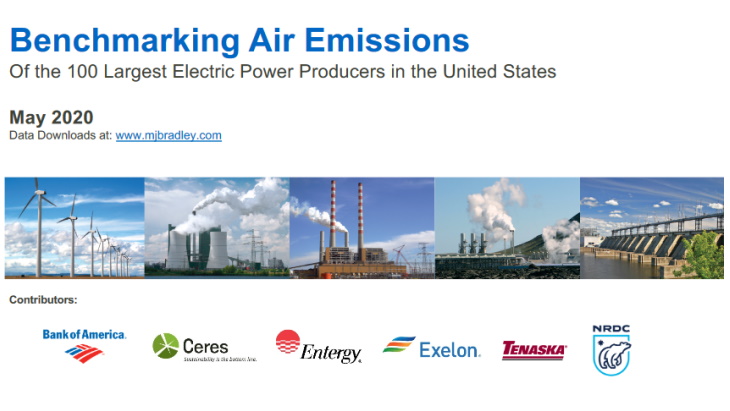The Benchmarking Air Emissions analysis is a collaborative effort between Ceres; Bank of America; power producers Entergy, Exelon, and Tenaska; and the Natural Resources Defense Council (NRDC). The current issue is the 16th in a series that began in 1997, using publicly reported data to compare the emissions performance of US power producers. It examines and compares emissions of key air pollutants, highlighting environmental performance and progress across the sector.
Power sector CO2 emissions fell by 8% from 2018 to 2019 - ahead of the COVID-19 pandemic while GDP rose by 2.3%. Over the period 2000-2019, GDP grew by 45%, CO2 emissions fell by 28% and generation from renewables doubled. This, said the report's authors, shows that "with the right generation mix, reduced emissions and economic growth can go hand-in-hand".
The drop in emissions, coupled with a rise in economic activity, can be attributed to the continued decline of generation from coal and the transition to lower and zero-emissions power sources, the analysis found. In 2018-2019, zero-carbon resources generated 36% of US electricity. Of those zero-carbon resources, nuclear made up 55%, renewables 26% and hydro 19%.
The latest report continues to demonstrate the critical role of existing low-carbon resources, including nuclear, and quantifies the extent of air pollution in the USA that continues to disproportionately impact the health of urban and low-income communities, said Chris Gould, Exelon senior vice president, corporate strategy and chief innovation and sustainability officer. "Focusing on maintaining and expanding zero-emission energy sources, while electrifying the economy, needs to be a national priority for realising a sustainable future, " he said.
Mike Twomey, Entergy's senior vice president of federal policy, regulatory and government affairs, said the company had been an industry leader in driving voluntary emissions reductions for nearly two decades. "We are on track to meeting our 2030 climate commitment by transforming our generation portfolio to cleaner resources and investing in our utility-owned nuclear facilities," he said.
Starla Yeh, director of NRDC's Analysis Group of the Climate and Clean Energy programme, said the pattern of growth coupled with emissions reductions continued a long-running trend, though may not hold in the data for next year's benchmarking report. "The COVID-19 pandemic has disrupted economic activity and is expected to even further accelerate the shift away from coal generation in the electricity sector," she said. "These trends show that as the US economy recovers there are significant opportunities ahead to push for a more prosperous clean energy future that prioritises emission reductions and investments in the communities that have borne disproportionate pollution burdens."
The analysis is based on publicly reported generation and emissions data from the US Energy Information Administration and the US Environmental Protection Agency, and also provides detailed fuel mix information for all of the producers. The latest edition was prepared by MJ Bradley & Associates.





_18570.jpg)
_16159.jpg)
_18938.jpg)
_33584.jpg)





